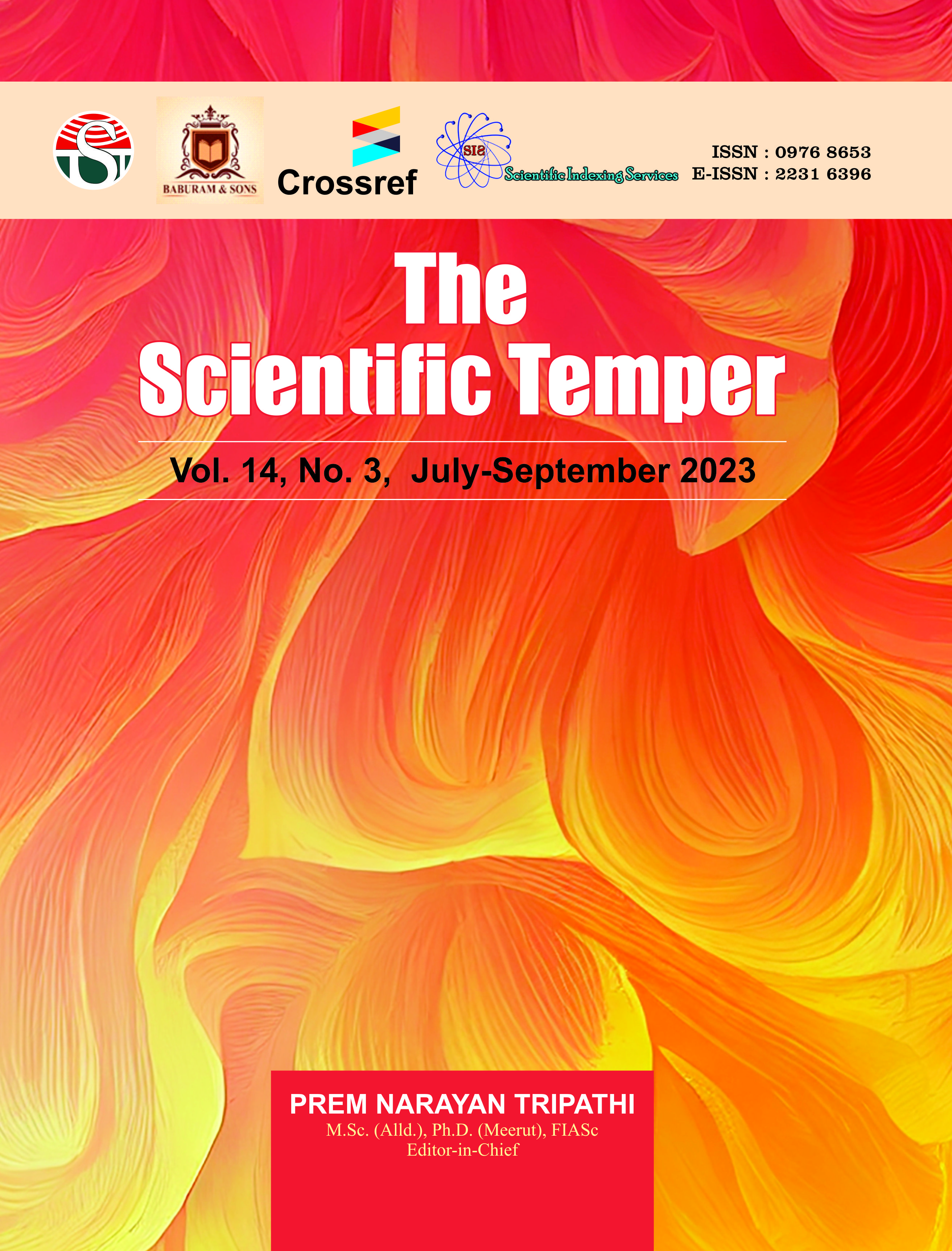Ensemble classifiers with hybrid feature selection approach for diagnosis of coronary artery disease
Downloads
Published
DOI:
https://doi.org/10.58414/SCIENTIFICTEMPER.2023.14.3.24Keywords:
Coronary artery disease, Artificial Intelligence, Machine learning.Dimensions Badge
Issue
Section
License
Copyright (c) 2023 The Scientific Temper

This work is licensed under a Creative Commons Attribution-NonCommercial-ShareAlike 4.0 International License.
Coronary artery disease (CAD) is a common type of cardiovascular disease with a high mortality rate worldwide. As symptoms may not be recognized until, after the cardiac attack, early diagnosis and treatment are critical to lowering mortality. The proposed study focuses on the creation of an intelligent ensemble system for the accurate detection of CAD. This paper presents the hybrid feature selection method based on Lasso, random forest-based boruta, and recursive feature elimination methods. The significance of a feature is determined by the score each approach provides. Machine learning techniques such as random forest, support vector machine, K-nearest neighbor, logistic regression, decision tree, and Naive Bayes are developed as base classifiers. Then, ensemble techniques like bagging and boosting models are created using base classifiers. The Z-Alizadeh Sani dataset was used to build and test the model. The bagged random forest model achieved 97.6% accuracy and 100% recall. The CatBoost model achieved 97.7% accuracy and 99.0% recall. Compared to traditional classifiers, the ensemble models achieved higher accuracy and can be used to assist clinicians in diagnosing coronary artery diseaseAbstract
How to Cite
Downloads
Similar Articles
- T. Ramyaveni, V. Maniraj, Hyperparameter tuning of diabetes prediction using machine learning algorithm with pelican optimization algorithm , The Scientific Temper: Vol. 15 No. 03 (2024): The Scientific Temper
- Merlin Sofia S, D. Ravindran, G. Arockia Sahaya Sheela, Clean Balance-Ensemble CHD: A Balanced Ensemble Learning Framework for Accurate Coronary Heart Disease Prediction , The Scientific Temper: Vol. 16 No. 10 (2025): The Scientific Temper
- Y. Mohammed Iqbal, M. Mohamed Surputheen, S. Peerbasha, Swarm intelligence-driven HC2NN model for optimized COVID-19 detection using lung imaging , The Scientific Temper: Vol. 16 No. 03 (2025): The Scientific Temper
- Raja S, Nagarajan L., Hybridization of bio-inspired algorithms with machine learning models for predicting the risk of type 2 diabetes mellitus , The Scientific Temper: Vol. 15 No. 03 (2024): The Scientific Temper
- Temesgen A. Asfaw, Batch size impact on enset leaf disease detection , The Scientific Temper: Vol. 15 No. 01 (2024): The Scientific Temper
- Temesgen A. Asfaw, Deep learning hyperparameter’s impact on potato disease detection , The Scientific Temper: Vol. 14 No. 03 (2023): The Scientific Temper
- G. Deena, K. Raja, M. Azhagiri, W.A. Breen, S. Prema, Application of support vector classifier for mango leaf disease classification , The Scientific Temper: Vol. 14 No. 04 (2023): The Scientific Temper
- Bajeesh Balakrishnan, Swetha A. Parivara, E-HRM: Learning approaches, applications and the role of artificial intelligence , The Scientific Temper: Vol. 14 No. 04 (2023): The Scientific Temper
- Kinjal K. Patel, Kiran Amin, Predictive modeling of dropout in MOOCs using machine learning techniques , The Scientific Temper: Vol. 15 No. 02 (2024): The Scientific Temper
- Rita Ganguly, Dharmpal Singh, Rajesh Bose, The next frontier of explainable artificial intelligence (XAI) in healthcare services: A study on PIMA diabetes dataset , The Scientific Temper: Vol. 16 No. 05 (2025): The Scientific Temper
<< < 1 2 3 4 5 6 7 8 9 10 > >>
You may also start an advanced similarity search for this article.
Most read articles by the same author(s)
- Sowmiya M, Banu Rekha B, Malar E, Assessment of transfer learning models for grading of diabetic retinopathy , The Scientific Temper: Vol. 14 No. 02 (2023): The Scientific Temper



